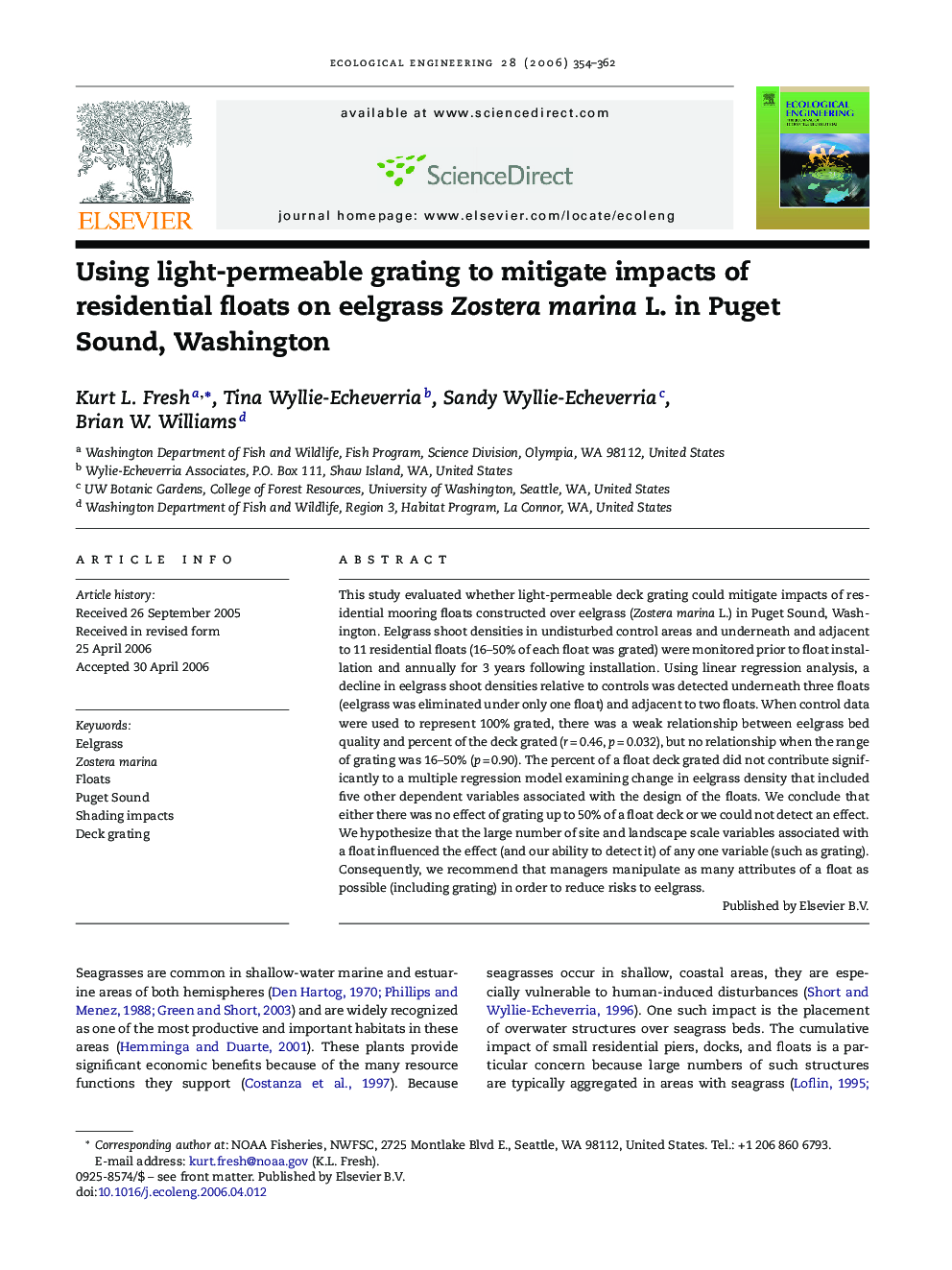| Article ID | Journal | Published Year | Pages | File Type |
|---|---|---|---|---|
| 4391142 | Ecological Engineering | 2006 | 9 Pages |
This study evaluated whether light-permeable deck grating could mitigate impacts of residential mooring floats constructed over eelgrass (Zostera marina L.) in Puget Sound, Washington. Eelgrass shoot densities in undisturbed control areas and underneath and adjacent to 11 residential floats (16–50% of each float was grated) were monitored prior to float installation and annually for 3 years following installation. Using linear regression analysis, a decline in eelgrass shoot densities relative to controls was detected underneath three floats (eelgrass was eliminated under only one float) and adjacent to two floats. When control data were used to represent 100% grated, there was a weak relationship between eelgrass bed quality and percent of the deck grated (r = 0.46, p = 0.032), but no relationship when the range of grating was 16–50% (p = 0.90). The percent of a float deck grated did not contribute significantly to a multiple regression model examining change in eelgrass density that included five other dependent variables associated with the design of the floats. We conclude that either there was no effect of grating up to 50% of a float deck or we could not detect an effect. We hypothesize that the large number of site and landscape scale variables associated with a float influenced the effect (and our ability to detect it) of any one variable (such as grating). Consequently, we recommend that managers manipulate as many attributes of a float as possible (including grating) in order to reduce risks to eelgrass.
